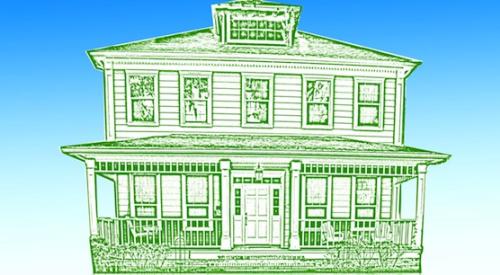Experts consider housing affordability a primary driver of housing demand. If a buyer's income rises and mortgage rates and/or house prices decline, chances are homes are going to sell like hotcakes...right? Maybe not.
The National Association of Realtors' Housing Affordability Index estimates the percentage of a house that a household earning median income can afford. An index value of 120, for example, means that family can buy 20 percent more home.
Affordability, as measured by NAR, peaked in 2003 at 142 and has since fallen 19 percent to 116, notes Brian Carey, economist with Moody's Economy.com and formerly with NAR. As it fell, housing continued to boom. In December, Carey noted that between 1989 and 1998, the correlation between housing affordability and existing home sales showed a strongly positive +0.76. "However, this correlation fell to zero from 1999 through the second quarter of 2003. Since then, the correlation has been -0.86!"
How could the index get it so wrong — almost 180 degrees? The assumptions behind the numbers didn't reflect market realities. For instance, the NAR index assumes, among other things, an average down payment of 20 percent, "which could generally be considered outdated given the availability of low-down-payment mortgage products," Ivy Zelman, analyst with Credit Suisse First Boston, says.
Additionally, all such indexes assume that lower prices and higher affordability are good for housing. Why, then, did flat prices fail to spark demand during the early 1990s recession in California? "Because consumers saw housing as a bad investment," says NAHB economist Michael Carliner. "At least in the short term, increasing prices don't reduce demand, they increase demand." In recent years, prices skyrocketed and so did sales.
| Affordability Indexes | |||||||||
| Year | Median Priced Existing Single-Family Home | Mortgage Rate* | Monthly P & I Payment | Payment as a % of Income | Median Family Income | Qualifying Income** | Composite | Fixed | ARM |
| 2003 | 170,000 | 5.74 | 793 | 18.1 | 52,682 | 38,064 | 138.4 | 135.8 | 150.3 |
| 2004 r | 184,100 | 5.73 | 858 | 18.9 | 54,527 | 41,184 | 132.4 | 128.6 | 141.5 |
| 2005 p | 207,300 | 5.91 | 985 | 20.7 | 57,214 | 47,280 | 121.0 | 119.2 | 125.2 |
| Source: National Association of Realtors, 2006 You can access the most recent Housing Affordability Index here | |||||||||












